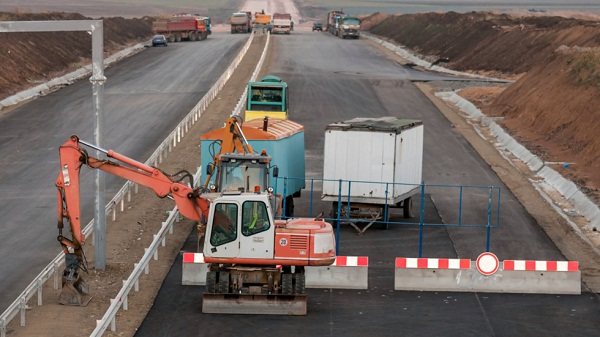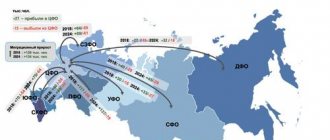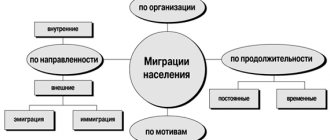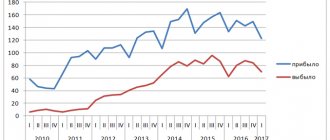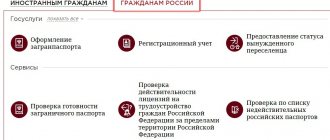What is
Pendulum migrations of the population are regular - daily or weekly movements of citizens from the place of their permanent registration to the place of work, provided that these places are located in different regional points. As a rule, potential participants in pendulum processes are a large percentage of residents of megacities and people living in surrounding rural settlements.
It has been established that the larger the regional center and the more developed its infrastructure, the more pronounced this movement manifests itself. In some countries, the problem of commuting migration is so acute that its size is comparable to the annual movement of the population to other countries on an irrevocable basis, and in some cases even exceeds these figures.
These processes are carefully studied, since they have a huge impact on the formation of regional labor markets in Russia, comparing them with the professional qualification structure of the local population of a particular administrative center and its rural settlements.
The phenomenon discussed in this article creates the prerequisites for meeting the various working needs of citizens, especially those who live in villages and small regional centers, where the professional demand for specialists is extremely limited.
Reasons for pendulum migration
When a vehicle was an elementary luxury, and traveling over fairly long distances involved time, people tried to live and work within walking distance.
As the standard of living of Russians has improved, the number of owners of their own cars has increased hundreds of times. This allowed citizens to easily move from village to city and back. Many left the noisy streets and moved closer to nature, while maintaining their jobs.
The influx of rural residents into cities could not but affect the need for vacancies, and this gap had to be filled somehow. New enterprises began to open, and our compatriots en masse took advantage of the opportunity to work in a large center for higher pay for their labor.
Thus, the basic reason for the spread of commuting migration is considered to be an improvement in the quality of life of the population against the backdrop of growing technological progress, which provides more and more benefits to human civilization.
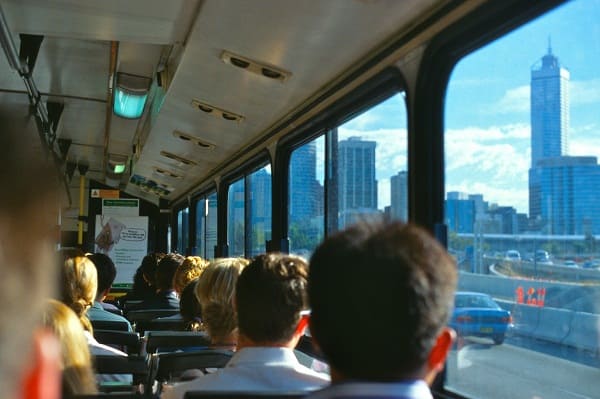
The effect of pendulum migration on urban development
Commutative migration is the main mechanism for the formation of urban agglomerations, the driving force of territorial growth of cities and suburbanization. The effects of commuting migration on urban development depend on its intensity, and this, in turn, depends on the economic potential of the city and transport development.
With the rapid development of transport, pendulum migration leads to the rapid extensive growth of cities, the development of suburbs with residential areas and the formation of classic residential areas. At the same time, the urban environment is strongly polarized, the center contrasts sharply with the periphery. Center-periphery property and social segregation is developing. The population of the agglomeration is rapidly increasing due to the influx of migrants to the developed suburbs.
In the future, with a slowdown in the development of transport, which is accompanied by traffic jams and work in overload mode, the development of the city is slower and more harmonious. Transport restrictions lead to an increase in real estate prices and the removal of some jobs from the city center, improvement and infrastructure development in former residential areas. The inability to get to work from the suburbs and rising housing prices lead to densification and increase in the number of storeys in the city and the “revival” of the suburbs. Social and property segregation remains, but is no longer determined by the proximity of a particular area to the center, but by other factors.
Peculiarities
Regular movement of a proportion of the population according to the “urban-rural” principle affects the progression of the following features:
- intensifying the spread of natural urbanization;
- a surge in social activity of citizens;
- qualitative improvement of social living conditions for the rural part of the displacement participants;
- erasing the differences between urban and rural people.
Almost every working person spends a sufficient amount of time on the road. But despite the high time costs, such labor centers are in demand, since they bring direct economic benefits to people - the larger the administrative center, the better the quality of life there, and as a result, the higher the average wage. The cost of real estate is also inflated.
Sometimes it happens the other way around. The metropolis is exhausting its internal labor resources and the limiting point of its industrial development is approaching. Then secondary personnel vacancies begin to appear, located in its suburban area. Thus, movement, primarily aimed at the city, spontaneously takes on a reverse trajectory. Experts determine two directions, going in different directions, but parallel to each other - one to the bedroom, and the second to its central part.
Note! With such an internal migration policy, the polarity between administrative regions is gradually erased, and the suburbs systematically flow into the metropolis, connecting with it through labor bridges of vacancies.
Migration in Russia – problems and statistics
One of the most significant problems of commuter migration is the limitation of amenities when moving from one point to another. Many of our regions cannot boast of the quality of roads and the level of transport services for citizens.
Frequent delays to the place of work are fraught with conflict situations with the employer, while not every employer is ready to practically solve the employee’s housing problems and provide him with a departmental apartment or dormitory.

An equally serious aggravating circumstance is the cost of travel. As practice shows, up to 30% of a migrant’s salary is often lost from the family budget to travel expenses.
Statistical research of a problem is a rather complicated procedure. The main difficulty is that it is almost impossible to control and take into account the fact of intraregional movement of people. After all, citizens do not leave the territorial boundaries of the state, and, therefore, do not cross checkpoints and do not issue visa documents. Therefore, all data obtained in this area is of a reference rather than precise nature.
The only thing that can be said for sure is that the process is gaining momentum, increasing annually the statistics of the population involved in this phenomenon. According to unconfirmed data, the annual increase averages 10-11% of the total number of registered citizens, which is equivalent to the population of an average-sized administrative center.
What are the features of pendulum migration of the population and what does it mean?
Migration processes of population movement can be both internal and external in nature. In the second case, it means crossing the territorial borders of a state and entering another country, and in the first, which will be discussed in this article, the action takes place within a single state. What kind of phenomenon is this and how it manifests itself in the Russian Federation, let's figure it out.
Peculiarities
Regular movement of a proportion of the population according to the “urban-rural” principle affects the progression of the following features:
- intensifying the spread of natural urbanization;
- a surge in social activity of citizens;
- qualitative improvement of social living conditions for the rural part of the displacement participants;
- erasing the differences between urban and rural people.
Almost every working person spends a sufficient amount of time on the road.
But despite the high time costs, such labor centers are in demand, since they bring direct economic benefits to people - the larger the administrative center, the better the quality of life there, and as a result, the higher the average wage. The cost of real estate is also inflated.
Sometimes it happens the other way around. The metropolis is exhausting its internal labor resources and the limiting point of its industrial development is approaching. Then secondary personnel vacancies begin to appear, located in its suburban area.
Thus, movement, primarily aimed at the city, spontaneously takes on a reverse trajectory.
Experts determine two directions, going in different directions, but parallel to each other - one to the bedroom, and the second to its central part.
Note! With such an internal migration policy, the polarity between administrative regions is gradually erased, and the suburbs systematically flow into the metropolis, connecting with it through labor bridges of vacancies.
Migration in Russia – problems and statistics
One of the most significant problems of commuter migration is the limitation of amenities when moving from one point to another. Many of our regions cannot boast of the quality of roads and the level of transport services for citizens.
Frequent delays to the place of work are fraught with conflict situations with the employer, while not every employer is ready to practically solve the employee’s housing problems and provide him with a departmental apartment or dormitory.
An equally serious aggravating circumstance is the cost of travel. As practice shows, up to 30% of a migrant’s salary is often lost from the family budget to travel expenses.
Statistical research of a problem is a rather complicated procedure. The main difficulty is that it is almost impossible to control and take into account the fact of intraregional movement of people.
After all, citizens do not leave the territorial boundaries of the state, and, therefore, do not cross checkpoints and do not issue visa documents.
Therefore, all data obtained in this area is of a reference rather than precise nature.
The only thing that can be said for sure is that the process is gaining momentum, increasing annually the statistics of the population involved in this phenomenon. According to unconfirmed data, the annual increase averages 10-11% of the total number of registered citizens, which is equivalent to the population of an average-sized administrative center.
Conclusion
The problems that commuting brings to society are not classified as large-scale. Every year there is a downward trend, which gives good prospects for the future. Today, this phenomenon affects about 22% of the Russian population, and in the coming years the number of people who live in one place and work in another will only grow.
Due to changes in the legislation of the Russian Federation, the information in the article may be out of date! Our lawyer is ready to advise you free of charge - write your question in the form below:
Source: //migrant-gid.ru/migratsiya/obshhie-svedeniya/v-chem-osobennosti-mayatnikovoj-migratsii-naseleniya/
Advantages and disadvantages
If we study the influence of pendulum movements in terms of pros and cons, then migration provides more positive aspects than unpleasant ones. Its main advantages are highlighted:
- thanks to the influx of labor, administrative centers increase in size and develop economically;
- the professional market is distributed more harmoniously, taking into account the connection to a specific area;
- the population within the region will not experience a shortage of additional job vacancies, and new highly qualified specialists will appear.
Now about the disadvantages. Of course they are. A large flow of internal migration inevitably entails problems in the road plan, when the capacity of Russian highways does not meet real life requirements. This makes it difficult to move and increases the time a person spends traveling to and from work and home. Sometimes you have to sit in traffic jams for hours.

In addition, excessive gas pollution and excess exhaust gases do not contribute to a normal environmental situation and can cause the development of many diseases. Frequent stress also does not motivate the human body to function properly.
Note! Residents of megacities suffer from serious diseases several times more often than the rural population.
Advantages and disadvantages of pendulum migration
Pendulum migration has an ambiguous character and brings pros and cons to both migration donors and recipients.
Advantages
The advantages of pendulum migration include the following:
- Migrants are opening up new opportunities in the labor market - they can get well-paid jobs. Thanks to this, social tension in areas with an unfavorable economic climate is reduced;
- Large cities are provided with the labor resources they need. At the same time, the social burden on the city does not increase: there is no need to build kindergartens, hospitals, schools, etc.;
- Thanks to commuting migrants, the transport infrastructure connecting various settlements is maintained and developed.

Flaws
The disadvantages of pendulum migration are no less than the advantages. These include the following factors:
- Lack of economic prospects in the locality - the donor of commuting migration. The decline in the quality and quantity of labor resources leads to the fact that economic growth in small cities and towns comes to naught. Commuting migrants do not create surplus product in their place of residence, new jobs do not appear here, etc.;
- Degradation of the social sphere of donor settlements. A significant portion of taxes is paid at the place of work. For example, personal income tax is paid at the place of registration of the tax agent, that is, the employer. The result is a situation where commuter migrants pay taxes in another settlement, but use the infrastructure at their place of residence. Local budgets simply do not have enough funds to maintain the social sphere, not to mention its development;
- Increasing load on the recipient settlement associated with motorization. There is an increase in the load on the transport infrastructure - there is not enough parking, width and density of roads, the number of traffic jams is growing, etc.;
- Citizens’ travel costs are increasing—a significant portion of migrants’ salaries is “eaten up” by transportation costs;
- Travel to and from work can be several hours. Due to fatigue, performance decreases, stress increases, and there is practically no free time left for rest, self-development, or meeting with friends. The life of migrants turns into an endless series of work, travel and sleep.
You may also like
1
The city of Denver in Colorado: how to get there and…
405
The importance of regular movements of citizens
In practice, pendulum migration occurs quite often, covering an increasing number of Russians every year. As has already been noted in terms of the development of the domestic economy, this phenomenon has a positive function. They stimulate the construction of highways, the repair of existing roads, and the improvement of the infrastructure of our cities. As consumer demand increases, generated by the influx of rural population, new shopping centers and entertainment facilities are opening, and new modern residential areas are being built.
As for the environmental situation in the country as a whole, it is controlled. Authorized departments and structures are constantly working on this. In general, the situation does not cause serious concern among specialists.
